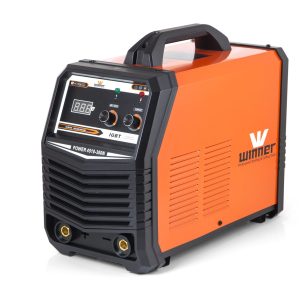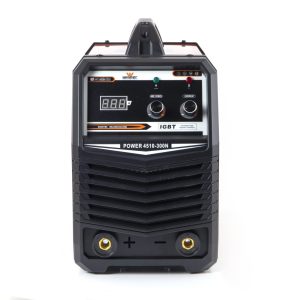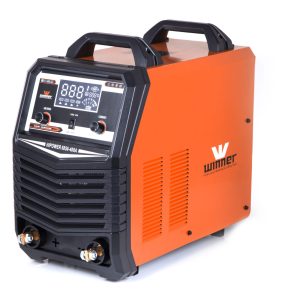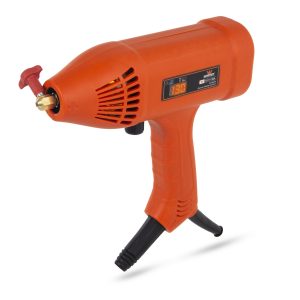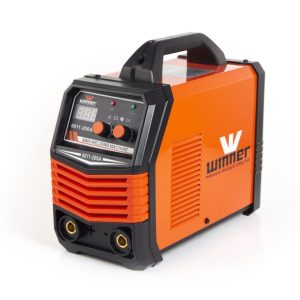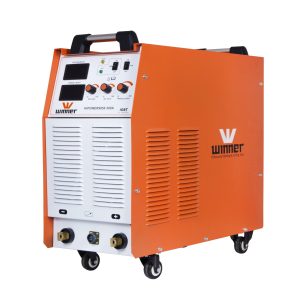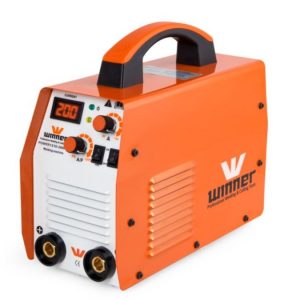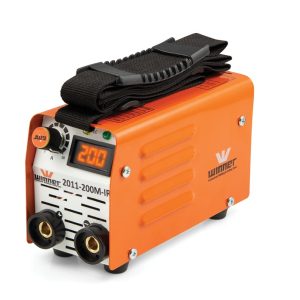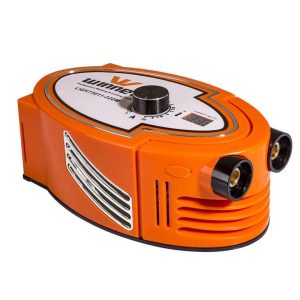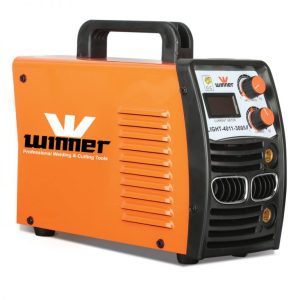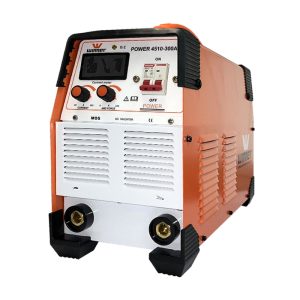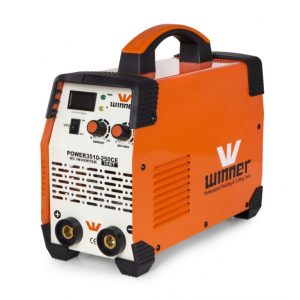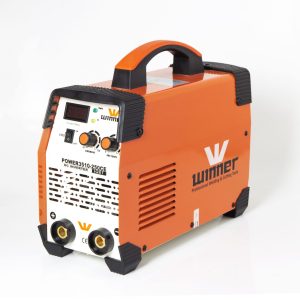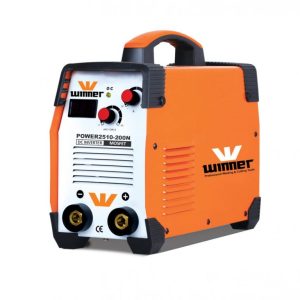Showing all 12 results
Electric welding machine
Welding is a technical process in industry and has many applications. This work is done with different devices, one of these devices is the electric welding device. There are different types of welding, all of which are done with special devices. Electric welding machine is available in different types and depending on the type of welding, the right machine is selected.
Electric welding machines use electric current to generate large amounts of heat to melt metal components. Based on the type of electric welding device used, the electric welding process can be manual, semi-automatic or automatic and uses current and voltage power sources.
In this article, we are trying to introduce you to different types of electric welding machines and explain how they work and how to use them.
What is a welding machine?
Welding is a manufacturing process by which metals are usually joined together. Welding is done using high heat; After melting the parts and connecting them to each other, the desired part is allowed to cool. Welding differs from low-temperature methods such as soldering in that it does not melt the base metal.
Filler metal is usually added to the joint to form a pool of molten metal that cools and forms the joint. Many sources can be used for welding, including gas flame, electric arc, laser, electron beam, friction and ultrasound.
To perform welding, a number of welding tools such as pliers, hammer, tongs, electrode, welding glasses and welding machine are needed. In the welding industry, depending on the type of welding process, several types of electric welding devices are used.
Some welding machines are manual and others are computer controlled. This guide will help you to get to know the types of electric welding and welding devices and their use.
What is an electric welding machine?
An electric welding machine is a machine used to melt metals. This device emits an electric arc from an electrode that melts the metal or delivers the filler to a joint between two pieces of metal. Electric welding machines consume significant amounts of energy to produce the 3600°C temperature required to melt metals.
Electric welding machines or welding guns are the most essential tools for a welding specialist. Welding machines produce heat that melts metal parts and joins them together. However, there is no one welding machine that is suitable for all welding projects, and there are different types of welding machines for each type of welding.
15 types of electric and non-electric welding machines
1- MIG welding machine
Inert gas electric welding machines are usually used for large-scale welding and large structures. In this case, the welder must use the consumable wire both as an electrode and as a filler material. This process is faster than TIG welding, resulting in less production time and cost.
This device works both single-phase and three-phase. Using these devices, stainless steel and aluminum metals can be easily welded. These types of electric welding machines are used in small businesses, manufacturing industries and metal fabrication.
2- TIG welding machine
Tungsten inert gas welding machines are better for thin metals and smaller projects because they produce clean, precise welds. To perform this process, the welder must use a non-consumable tungsten electrode.
These types of machines produce substantial welds on metals such as mild steel, stainless steel, or aluminum. The most important applications of TIG electric welding devices are in pipeline and pipe welding. However, it is used in many industries such as aviation, aerospace and sheet metal operations.
3- Electric arc welding machine with flux core
Flux core welding machines are usually used for welding thick metals. In this device, welding uses the heat generated by an electric arc to melt the base metal in the joint area. FCAW machines are suitable for welding in indoor and outdoor environments.
The flux-filled electrode is fed continuously so there is no need to stop and restart. These types of electric welding devices have less electrode waste and produce some steam during operation. Some FCAW welders can be operated at very hot temperatures and close to 1000 amps.
4- Spot welding machine
Spot welding is a resistance welding that is used to weld two or more metal sheets together by applying pressure and heat to the welding area by electric current. This electric welding machine has advantages such as efficient power consumption, high manufacturing speed and simple automation.
Spot welding machines are mostly used in the automotive industry. These devices are much cheaper than their similar counterparts. One of the drawbacks of using a spot welding machine is that it cannot weld thick parts. In addition, if the allowable pressure on the workpiece is not achieved, the weld will break or disappear.
5- MIG thyristor welding machine
This type of electric welding machine is made using the best quality and precise parts. Most welders prefer this welding machine to repair objects or install them on a suitable surface. These machines are perfect for welding solid core and flux materials.
This model of welding machine can have high strength and is widely accepted by welders due to its dimensional accuracy and durability. Thyristor MIG welding machines produce a small amount of spark, which makes them better and easier to control. They can easily weld metals such as mild steel, low carbon steel, alloy steel, etc.
6- Protective metal arc welding machine
In general, shielded metal arc welding machines work on the heat produced by the electric arc. These are also known as stick welding, which uses an electric current that passes through the gap between the metal and the weld stick (filler rod). SMAW machines work with both AC and DC current.
This electric welding machine uses a filler rod for welding which is coated with a flux. This model of welding machine prevents oxidation and pollution by producing carbon dioxide gas during the welding process. SMAW welding is economical compared to other devices and is used for welding processes in industry and repairs.
7- Energy beam welding machine
This device uses a high-speed stream of electrons that is applied to the materials to be joined using highly focused magnetic fields. The energy beam electric welding machine has the ability to weld thick metals to thin metals. In addition, the welder can weld different types of metals with it.
These types of welding machines can weld specific points on metals. There is little or no warping in the welded areas. The welder must perform this welding in a vacuum because the electron beam is absorbed by the air, this device is not suitable for home use.
8- Atomic hydrogen welding device
The AHW machine uses the arc generated between two tungsten electrodes and hydrogen gas produced by a hydrogen gas cylinder to perform welding. This type of welding is known as atomic hydrogen welding because the arc separates the hydrogen into atomic form.
These types of welding machines need an experienced operator to work. This process is not as widely used as GMAW. AHW devices are used on thin and thick materials and are suitable when fast welding is required.
9- Underwater welding device
These machines usually involve creating an electric arc between a continuously fed electrode and the workpiece to be welded. This means that there is no gas shield, but a powder flux. Submarine arc welding machines produce better quality welds than other types of machines.
In this type, the flux can be reused, which minimizes waste generation. Since it is an automatic or semi-automatic system, the operator does not need much experience to use this machine. The main disadvantage of this device is that it is not portable. These machines are usually used in piping works and pressure tanks.
10- Oxyacetylene welding machine
Oxyacetylene welding machine uses fuel gas with oxygen as heating material. In this type of welding machine, the flame is considered as the main element at the end of the torch. This flame melts the base metal and potential filler metal to form a continuous weld.
This machine is best for thin metals and does not work well on thick materials. An operator can effectively control the temperature and welding beads using this device. These welding machines are mostly used all over the world because they are relatively cheap and portable.
11- Transformer welding machine
It is a step-down transformer that converts high voltage, low amp AC input current into low voltage, high amp AC welding current. The transformer welding machine can work with single-phase electricity.
Most of the AC power is generated and every time the polarity changes, the voltage crosses zero and an unstable arc state is created. However, this problem can be solved by designing better pressure characteristics in the welder and better AC electrodes.
12- rectifier welding machine
In this welding device, the rectifier converts the input AC current into the output DC so that it can have negative and positive polarity. A single phase rectifier welder is a type of transformer welder to which the rectifier is connected to obtain a DC output. These electric welding machines are manufactured using rectifier technology for MIG welding. They are used to regulate current, voltage and polarity for good welding performance.
13- converter welding machine (rectifier)
The rectifier welding machine works on AC power source and can provide high AC frequency and DC welding current. In this device, three-phase AC is fed to the rectifier units and delivers DC to a single output circuit.
The output of the rectifier is always a DC current, which can be constant or variable. It uses diode, thyristor or transistor to convert AC to DC for output. There are many different types of welding straighteners available, however, they are all similar in function and operation.
14- Plastic welding machine
Plastic welding machines are used to connect plastic parts and repair cracks. When welding plastic materials, the materials are first connected and then put under pressure. These welding machines provide better strength. Using several basic welding techniques, these machines are capable of welding many plastics such as polypropylene, high density polyethylene (HDPE), PVC, CPVC, ABS and even Lexan or polycarbonate.
15- Multipurpose welding machine
Apart from all these electric and non-electric welding devices, some types of them are used for several purposes. This means that some machines may offer different welding processes. If you don’t want to be limited in welding options, look for a welding machine that can handle more than one process.
There are some MIG welding machines that can work as FCAW. TIG machines can also act as wood welding machines. But the operator needs to buy additional accessories or change the settings of the welder.
Factors affecting the choice of electric welding machine
Despite being aware of different types of welding processes, welders must choose the right machine for their needs. Therefore, the welder should keep the following points in mind.
1- Choosing a conventional or complex welding machine
Choosing an electric welding machine depends on the skill level of a beginner or trained welder. Beginners can choose a basic welding machine such as a MIG welder. After gaining enough experience and skill, the welder can work with TIG welding machine and other devices.
2- Welding quality
If you are looking for quality welding, TIG welding is a good option. Also, if you are welding rusty or dirty metals and want stronger welds, use a stick welder or flux welder.
3- Metal thickness
Typically, you should use a stick welder for thicker metals. While for thin metals, MIG or TIG welding machine is required.
4- Considering welding conditions
The welder should always pay attention to the environment in which the welding is done and then depending on it, provide the electric welding machine and other necessary equipment. In general, a stick or flux welder is suitable for harsh outdoor conditions such as wind and the like.
5- Choosing the right power source
DC output is generally considered a good choice for welding steel and stainless steel metals. Metals like aluminum and magnesium require AC output and are good choices. If the welder needs to weld different materials, an AC/DC combination welding machine is the best choice.
6- Types of metal and welding
MIG welding machines are commonly used for welding stainless steel, steel and aluminum alloys. Wood welding machines work well with stainless steel, steel and cast iron. TIG welding machines are a better choice for all metals or alloys except cast iron.
7- Choosing a portable welding machine
If the power source is moving, you may need a portable welding machine that is either driven by a motor or powered by an inverter.
Conclusion
In the end, I come to the conclusion that welding is the process of joining two metals together. To do this, the welder must use an electric or non-electric welding machine. So, if you are a welder, you should know these welding machines in order to choose the right equipment for you.
There are different types of electric and non-electric welding machines for performing different welding tasks, which we mentioned above. The type of welding is selected according to the type of metal and the place where it is performed. To perform welding, you must use appropriate safety equipment to prevent possible injuries. Welding equipment includes special welding clothing, welding mask, welding goggles, welding mask hat and welding gloves.
To carry out light welding at home, the appropriate tools and equipment should be used and safety points should be observed. Of course, it is better to get help from an expert to do the welding work.
Frequently Asked Questions
1- Which gas is used in welding?
Acetylene is the only suitable fuel gas for gas welding because of its favorable flame characteristics at high temperatures and high emission rates. Other fuel gases, such as propane, propylene, or natural gas, do not produce enough heat input for welding, but are used for cutting, torch soldering, and brazing.
2- Which weld is stronger?
TIG welding is often considered the strongest weld because it produces intense heat and the slow cooling rate results in high tensile strength and ductility. MIG is also an excellent candidate for the strongest type of welding because it can create a strong joint.
3- What are the main components of equipment required for welding?
energy source
Electrode and cable holder
Protection of the welder
smoke extraction
4- What are the types of electric welding machines?
MIG welding, TIG welding and wood welding are three types of electric welding.
5- What type of welding is used for steel?
TIG welding is mostly used to weld thin sections of alloy steel, stainless steel, and non-ferrous metals such as aluminum, magnesium, and copper alloys. This process gives the operator more control over the weld and allows for strong, high quality welds.
6- Which is the best electric welding machine?
1. ESAB CPRA 1200S-415V underwater welding machine.
2. Great Yuva -400 A welding machine.
3. Rally Wolf ARC 200 (R76/R65)-41A, 8.2 kg welding inverter (IGBT)
4. MMA DC Micro ARC 400B – 400 A inverter welding machine.
5. Inverter welding system Power X TIG/ARC 400IJ -22 to 400 A
The reliable sources we have used in writing this article: theengineerspost.com

